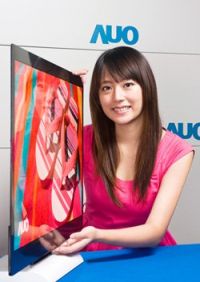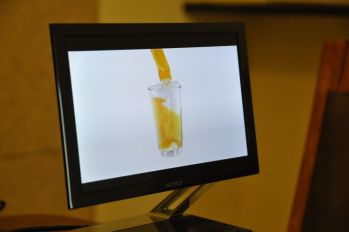There are two interesting reports today regarding AU Optronic's OLED TV program. According to Reuters, the company is planning to sell up to 800 million shares (or about $300 million) to finance its OLED program and to "enhance the company's operational capital position". ETNews says that Sony is collaborating with AUO on OLED TV research. Perhaps it makes sense for Sony: AUO will provide the capital and manufacturing while Sony will contribute its OLED know-how (ETNews suggests that Sony engineers have been working with AUO since 2011).

Back in February AUO announced a strategic alliance with Idemitsu Kosan on OLED materials and technology, and ETNews suggests that this will turn into a three-way alliance with Sony now. We'll have to wait for confirmation of course, the only official word from Sony was when its new CEO said they will make "major investments towards OLED TVs" back in February.
 Sony XEL-1 OLED TV
Sony XEL-1 OLED TV
AUO already unveiled a 32" OLED TV prototype back in November 2011, and they want to unveil larger panels towards the end of the year - and ones that are closer to mass production. The 32" prototype AUO showed had a Oxide-TFT (IGZO) backplane and was fabricated using vapor deposition with a metal mask. The panel featured Full-HD (1920x1080) resolution, 100,000:1 contrast ration, 0.01ms response time and brightness of 200 cd/m2.
AUO's smaller AMOLEDs that they will soon start producing will be 4" to 5" in size and will be sold to smartphone makers. The panels will feature 250-300 ppi (without pentile). The panels use an LTPS substrate and will be produced in AUO's 3.5-Gen line in Hsinchu, Taiwan. In the second half of 2013, AUO's 4.5-Gen AMOLED Line in Singapore (at AFPD) will start producing panels as well.
Comments
Yeah, you're right, my calculations were all wrong...


Very good news indeed, though I'm not sure about your $5 billion number. 800 million shares at NT$14 will raise just shy of $380 million in cash.
I have no real concept of how these Asian firms finance their CAPEX, but that would seem to make a pretty good down payment on a reasonably sized fab conversion project.